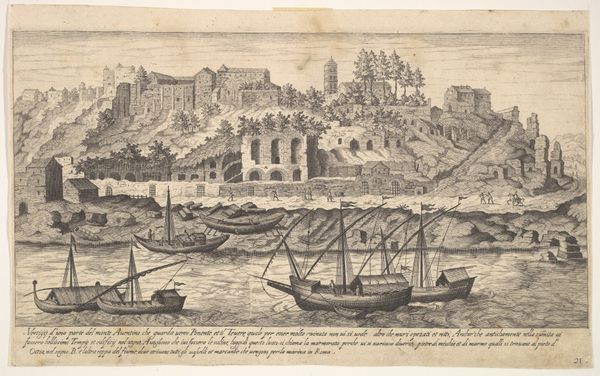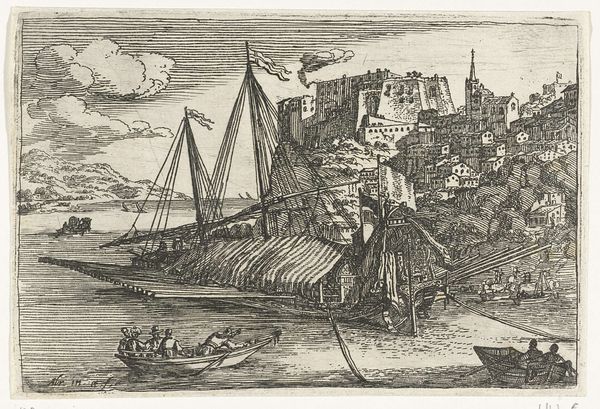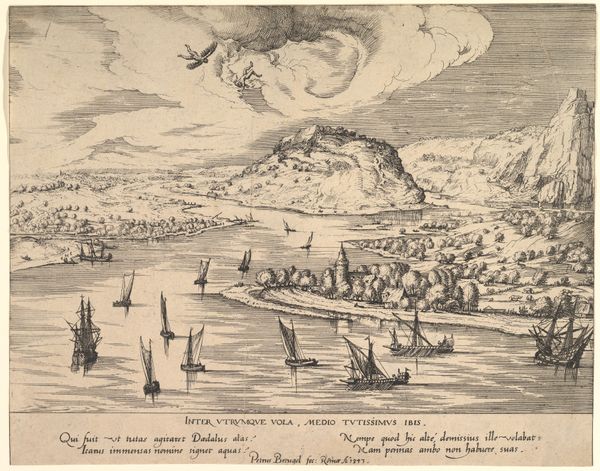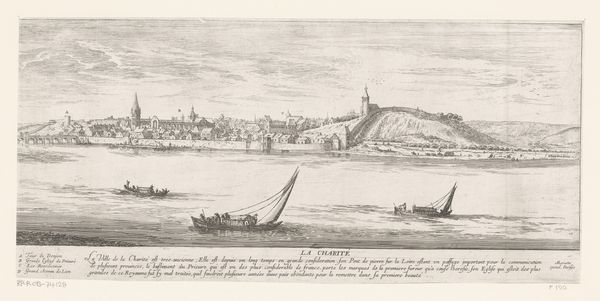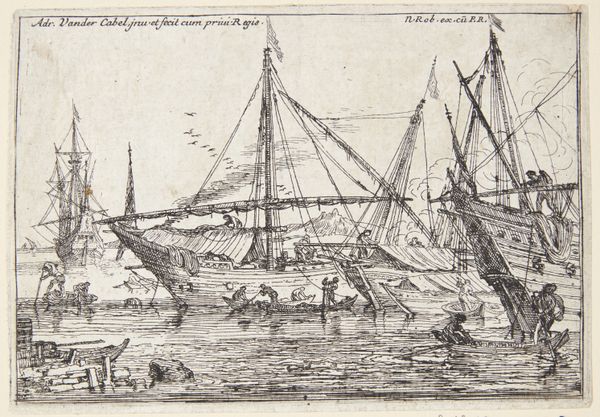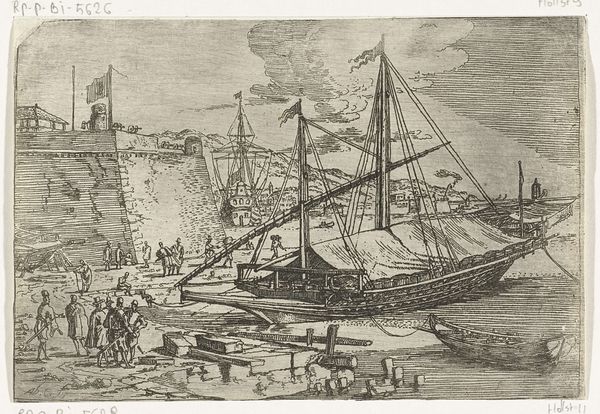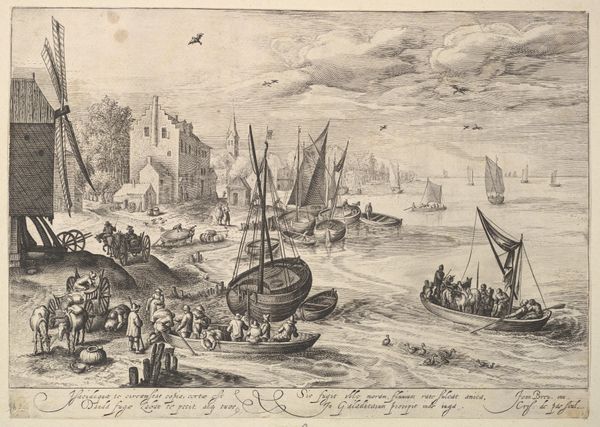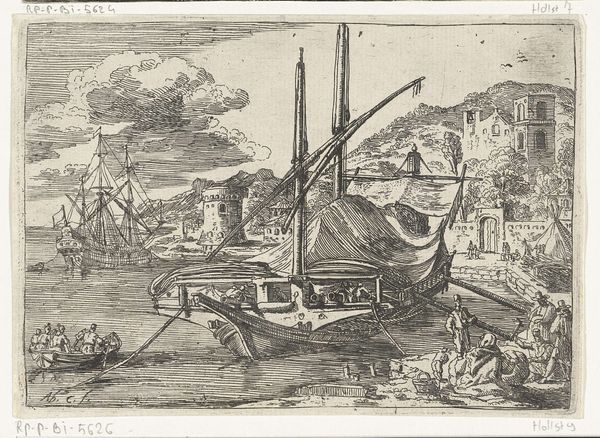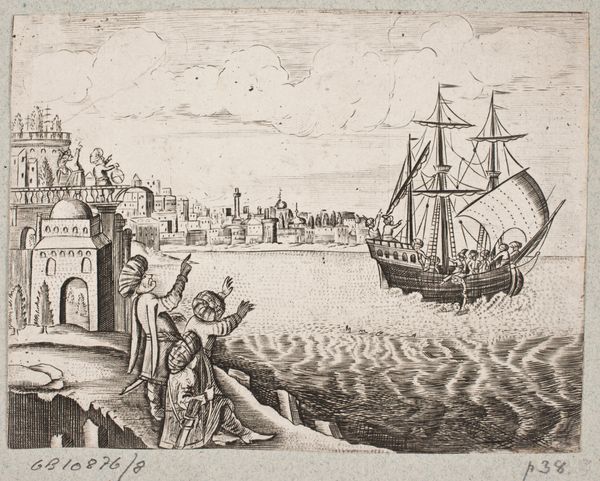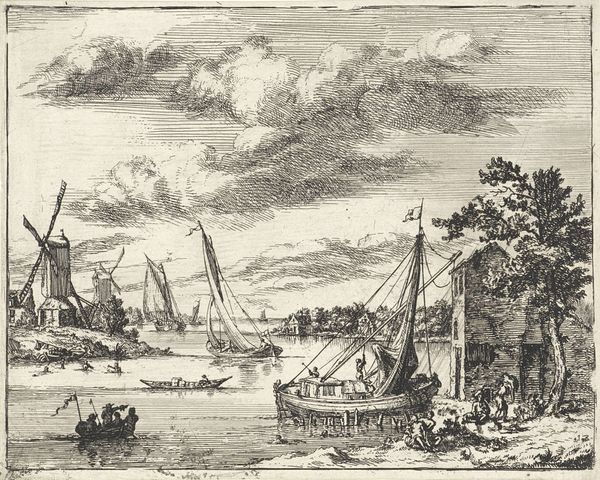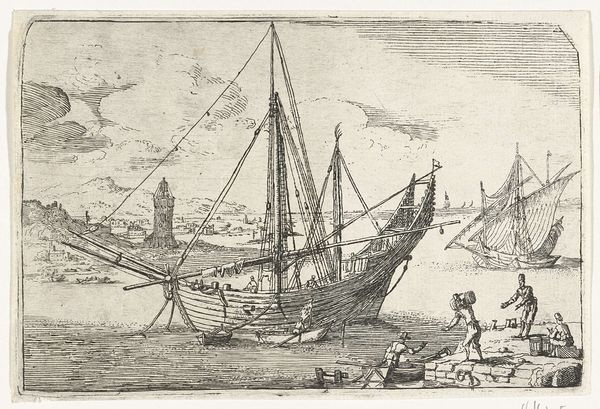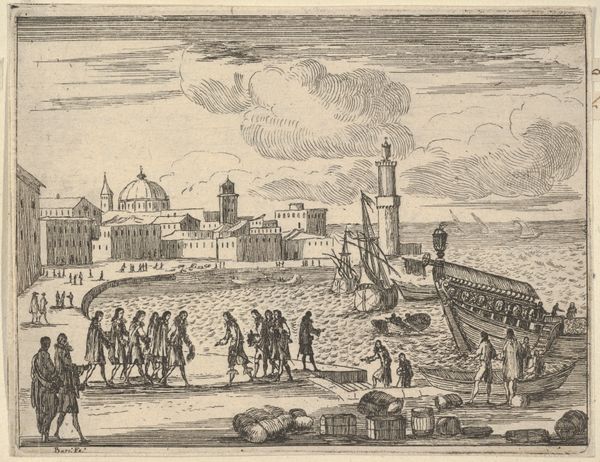
drawing, print, etching, ink
#
drawing
#
baroque
#
dutch-golden-age
# print
#
pen sketch
#
etching
#
landscape
#
ink
#
line
#
cityscape
Dimensions: 148 mm (height) x 233 mm (width) (bladmaal)
Editor: Adriaen van der Kabel's "En havn", dating between 1630 and 1705, rendered in ink as an etching and drawing, beautifully captures a bustling port scene. The sheer activity depicted is mesmerizing. What societal elements might van der Kabel be commenting on? Curator: Considering the prominence of maritime scenes during the Dutch Golden Age, "En havn" offers insight into the period’s economic and political emphasis on overseas trade. What strikes me is the dynamic energy—people loading and unloading goods, others swimming. How does that active participation reflect the contemporary society? Editor: It makes me think about the rising merchant class, and their power as an effect of overseas commerce, wouldn’t you agree? Curator: Precisely. Van der Kabel, in meticulously portraying this harbour, inadvertently reveals the underpinnings of Dutch power at the time. How does the art historical context shape our understanding and, furthermore, the value we ascribe to art? Editor: That's a fascinating point. The style itself is telling of that era and that country, as Dutch Golden Age artwork became increasingly associated with cityscapes like this one. Curator: Exactly, the image’s politics lie in the artist's deliberate capturing and marketing this bustling harbor. Van der Kabel's harbor doesn't simply depict a place; it embodies a crucial moment in the rise of global capitalism and the Dutch Republic’s involvement. Editor: It is true. It all comes back to how art can reflect—and sometimes reinforce—prevailing powers. Curator: Yes! Recognizing art's relationship to political movements encourages us to question it and ourselves, even today. It really emphasizes that art doesn't exist in a bubble.
Comments
No comments
Be the first to comment and join the conversation on the ultimate creative platform.
